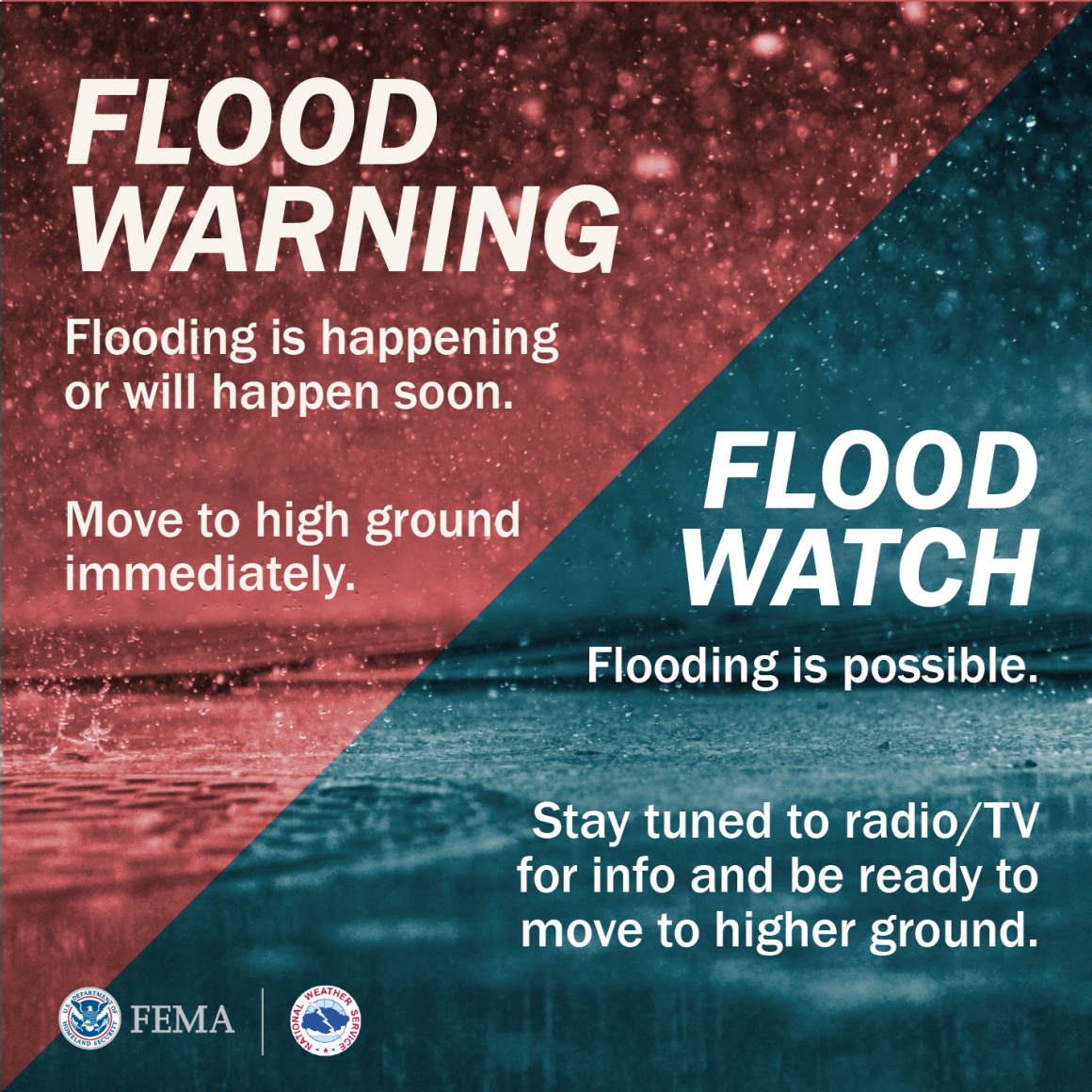Effective Flood Alerts: Your Guide To Flood Preparedness And Response

Table of Contents
Understanding Flood Alerts and Warning Systems
Understanding the language and sources of flood alerts is paramount. Different levels of alerts signal varying degrees of risk. These are typically issued by the National Weather Service (NWS) and local authorities, disseminated through various channels.
- Flood Watch: Conditions are favorable for flooding. Stay informed and be prepared to act.
- Flood Warning: Flooding is occurring or is imminent. Take action immediately.
- Flood Advisory: Flooding is possible. Be aware of potential hazards.
Reliable sources for flood information include:
- The National Weather Service website (weather.gov)
- Your local news channels and radio stations
- Mobile weather apps (e.g., The Weather Channel, AccuWeather)
- Local emergency management agency websites and social media pages
It's crucial to understand the nuances in flood warning language. For instance, "life-threatening flooding" indicates an extremely dangerous situation requiring immediate evacuation. Knowing where to find reliable sources and how to interpret these alerts is crucial for your safety.
Preparing for Floods Based on Effective Flood Alerts
Proactive preparation is key to minimizing the impact of floods. Developing a comprehensive flood preparedness plan is crucial, encompassing:
- Family Communication Plan: Establish a designated contact person and meeting point outside the affected area.
- Emergency Supply Kit: Include essential items such as water, non-perishable food, first-aid kit, medications, flashlights, batteries, blankets, and important documents (copies stored securely elsewhere).
- Checklist: Water (1 gallon per person per day for several days), canned goods, manual can opener, flashlights, batteries, first-aid kit, copies of essential documents, medications.
- Evacuation Routes and Shelters: Identify multiple escape routes and locate nearby designated shelters in advance.
- Protecting Your Home: Elevate valuable possessions and secure important documents in waterproof containers. Consider floodproofing measures if possible.
- Tips: Move valuables to upper floors, sandbag vulnerable areas, install waterproof barriers.
- Flood Watch Actions: If you receive a flood watch, begin gathering your emergency supplies, monitor weather reports closely, and consider moving valuables to higher ground.
Responding to Flood Alerts: Evacuation and Safety Procedures
When a flood warning is issued, immediate action is critical. Evacuation may be necessary depending on the severity of the alert and your location.
- Evacuation: Follow the instructions provided by emergency services. Use designated evacuation routes. Consider transportation options; traffic may be heavy.
- During the Flood: Stay away from floodwaters, which can be contaminated and hide dangerous debris. Avoid driving through flooded areas.
- After the Flood: Be cautious returning home. Report damage to authorities, follow post-flood cleanup safety procedures (wear protective gear), and be aware of potential hazards such as downed power lines.
- Safety Tips: Never walk or drive through floodwaters, be aware of electrical hazards, and watch out for unstable structures.
- Reporting Damage: Contact your local emergency management agency or insurance company to report flood damage.
Utilizing Technology for Effective Flood Alerts
Technology plays a critical role in providing timely flood warnings. Utilizing available resources ensures you receive alerts quickly and efficiently.
- Mobile Apps & Websites: Several apps and websites provide real-time weather information and flood alerts.
- Weather Monitoring: Employ weather monitoring tools and early warning systems to stay ahead of potential flooding.
- Emergency Alerts: Sign up for emergency alerts from your local authorities. This ensures you receive immediate notifications about imminent threats.
- Reliable Apps/Websites: The Weather Channel app, AccuWeather, National Weather Service website.
- Customizing Alerts: Set your location and preferences to receive alerts tailored to your specific area.
Conclusion:
Effective flood alerts are vital for protecting lives and property. By understanding warning systems, preparing adequately, and utilizing available technology, you significantly reduce your vulnerability to flooding. Remember, a comprehensive flood preparedness plan is your best defense. Stay informed and safe with effective flood alerts. Develop your personal flood preparedness plan today and ensure your family's safety!

Featured Posts
-
 Melanie Thierry De Ses Debuts A Ses Succes Actuels
May 26, 2025
Melanie Thierry De Ses Debuts A Ses Succes Actuels
May 26, 2025 -
 Los Hijos De Alberto De Monaco Celebran Su Primera Comunion
May 26, 2025
Los Hijos De Alberto De Monaco Celebran Su Primera Comunion
May 26, 2025 -
 George Russell Clears 1 5 Million Debt Speculation Mounts Over Mercedes Deal
May 26, 2025
George Russell Clears 1 5 Million Debt Speculation Mounts Over Mercedes Deal
May 26, 2025 -
 G7 Finance Ministers Ignore Looming Tariffs In Final Statement
May 26, 2025
G7 Finance Ministers Ignore Looming Tariffs In Final Statement
May 26, 2025 -
 Rtbf Et Les Diables Rouges Analyse D Une Dynamique Renouvelee
May 26, 2025
Rtbf Et Les Diables Rouges Analyse D Une Dynamique Renouvelee
May 26, 2025
Latest Posts
-
 The Rising Stars Latin Women Dominating The Music Scene In 2025
May 29, 2025
The Rising Stars Latin Women Dominating The Music Scene In 2025
May 29, 2025 -
 Latin Women In Music Shaping The Sounds Of 2025
May 29, 2025
Latin Women In Music Shaping The Sounds Of 2025
May 29, 2025 -
 Grupo Fronteras Alleged Trump Support Analysis Of The Criticism
May 29, 2025
Grupo Fronteras Alleged Trump Support Analysis Of The Criticism
May 29, 2025 -
 The Grupo Frontera Donald Trump Backlash A Deeper Look
May 29, 2025
The Grupo Frontera Donald Trump Backlash A Deeper Look
May 29, 2025 -
 Grupo Frontera And Donald Trump Controversy And Public Reaction
May 29, 2025
Grupo Frontera And Donald Trump Controversy And Public Reaction
May 29, 2025
